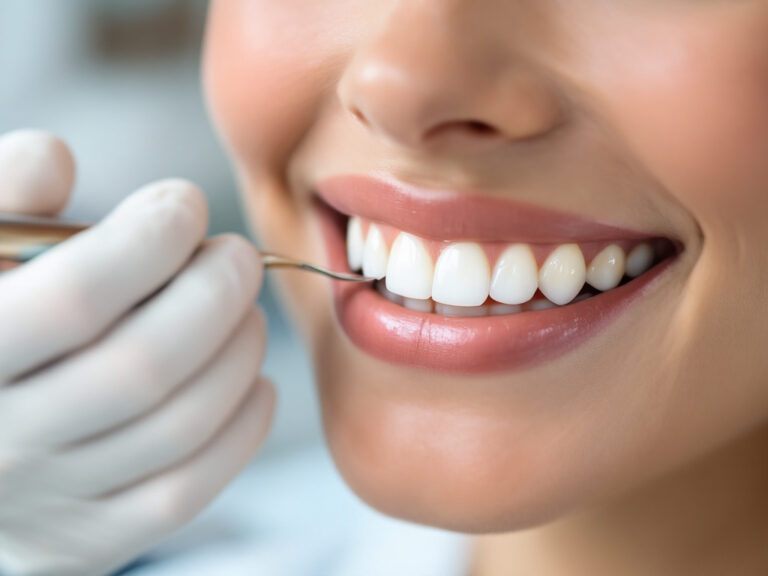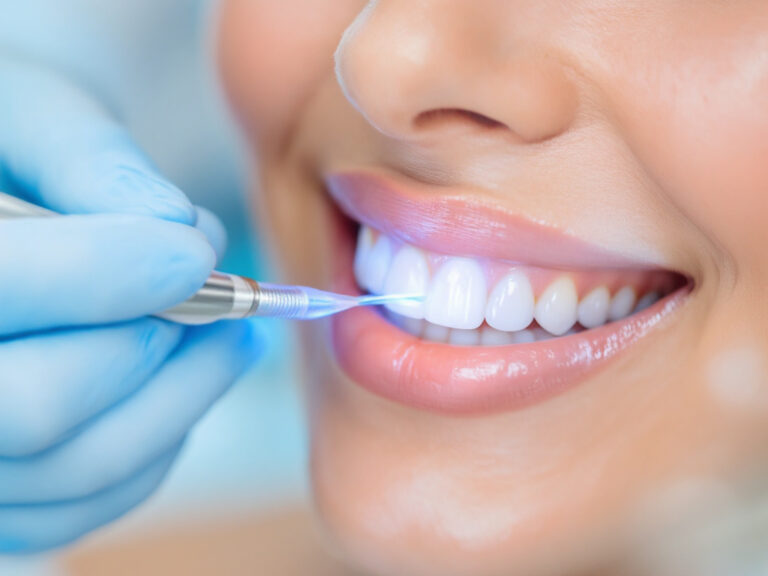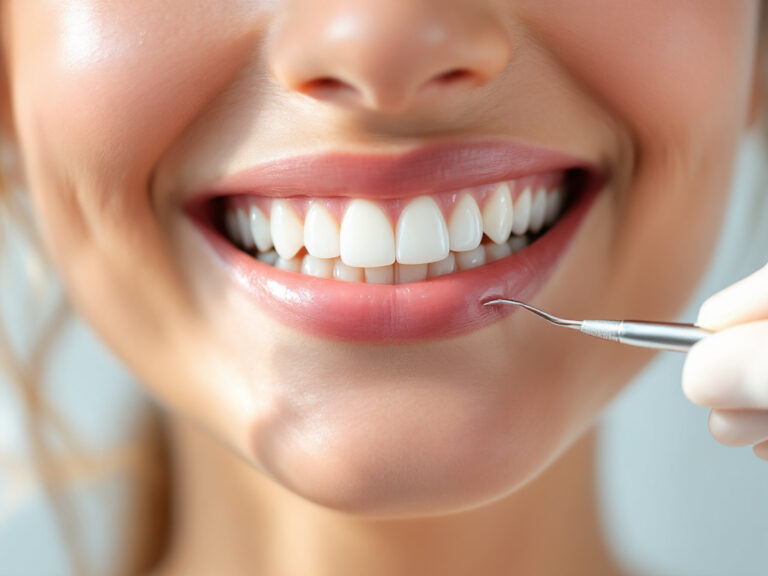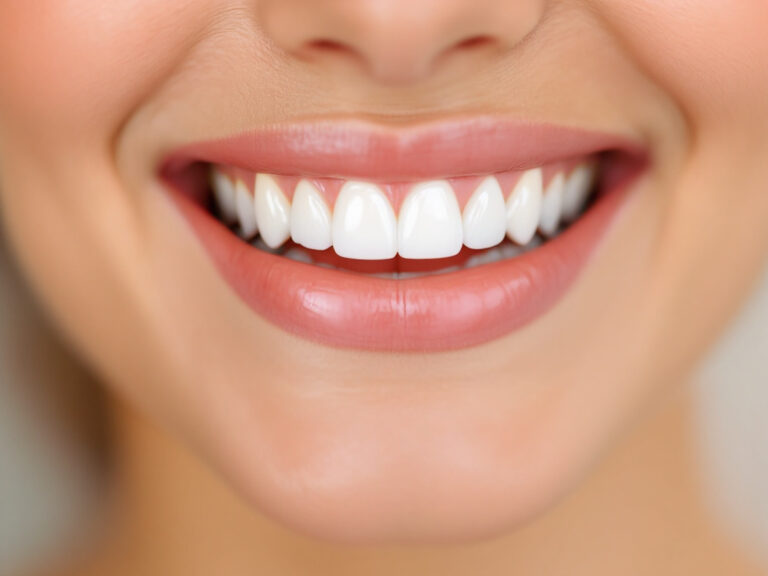Understand porcelain crown restoration
If you have a cracked, worn or weakened tooth, porcelain crown restoration can help you regain both function and confidence in your smile. Porcelain crown restoration involves covering your damaged tooth with a custom-made cap that mimics natural enamel. By choosing this long-term oral function solution, you protect your tooth against further decay and restore chewing efficiency. Your dentist may recommend porcelain crowns after procedures like root canal therapy services or when you need to reinforce a tooth that has large fillings or structural flaws.
Porcelain crowns are fabricated in a dental lab or created on the same day using CAD/CAM technology. In either case, your dentist will ensure the shade, shape and translucency match your surrounding teeth, delivering a seamless, discreet result. Modern porcelain materials also resist staining and wear, making porcelain crowns one of the most popular options for front-tooth and smile-enhancement treatments.
Compare crown materials
Choosing the right crown material is key to a successful restoration. Below is a comparison of common dental crown types:
| Material | Lifespan | Appearance | Pros | Cons |
|---|---|---|---|---|
| Porcelain (all-ceramic) | 10–15+ years [1] | Closest to natural enamel | Biocompatible, no metal allergy risk, gentle on opposing teeth | More prone to chipping under extreme force |
| Porcelain-fused-to-metal | 10–20 years [2] | Good shade match | Combines strength of metal with porcelain finish | Porcelain layer may chip, metal margin visible if gum recedes |
| Zirconia | 15–30 years [2] | Opaque white | Extremely durable, minimal wear on opposing teeth | May look less translucent than natural enamel |
| Pressed ceramic | 8–15 years [2] | Good translucency | Strong inner core, aesthetic | Layers can chip like PFM crowns |
| Metal (gold alloy, stainless steel) | 20+ years [3] | Metallic | Highly durable, minimal tooth reduction | Not tooth-colored, usually for back molars only |
| All-resin (temporary) | 3–5 years [2] | Fair | Affordable, quick | Least durable, often used as a temporary solution |
Each material has trade-offs in strength, aesthetics and cost. Your dentist will evaluate factors such as tooth location, bite forces and aesthetic goals when suggesting the best option for your situation.
Explore crown benefits
Porcelain crown restoration offers several advantages that make it a smart choice for many patients:
- Natural appearance: Porcelain’s translucency and sheen closely mimic tooth enamel, making crowns almost impossible to spot [4].
- Biocompatibility: Porcelain is bio-compatible, eliminating allergic reactions and making it ideal if you have metal sensitivities.
- Gentle on opposing teeth: Unlike some harder materials, porcelain causes less enamel wear on adjacent teeth [2].
- Stain resistance: Glazed porcelain resists coffee, tea and tobacco stains, helping maintain a bright smile.
- Long lifespan: With proper care, porcelain crowns can last 10 to 30 years depending on quality and location [3].
These benefits support both functional and cosmetic goals, ensuring you can eat, speak and smile confidently for years to come.
Assess patient candidacy
Not every situation calls for a full-coverage crown. Your dentist will consider:
• Tooth damage: Extensive decay, large fillings or severe cracks often require crowns rather than simple cavity repair and restoration or tooth filling repair.
• Location: Front teeth benefit most from porcelain crowns due to their aesthetic properties. Back teeth under heavy chewing forces may be better suited for zirconia or metal alloys.
• Root health: If pulp involvement is present, pairing crown placement with gentle root canal treatment ensures lasting stability.
• Oral hygiene: Good brushing, flossing and regular dental checkups extend crown lifespan.
• Bite and bruxism: Nightguards or bite correction treatments like bite correction dental treatment may be recommended if you grind or clench your teeth.
Alternatives to full crowns include porcelain inlay and onlay treatment, which preserve more tooth structure, or simple composite dental fillings when damage is minimal. Discuss these options with your dentist to determine your ideal restorative path.
Prepare for crown procedure
Proper preparation makes porcelain crown placement smoother and more comfortable. Here’s what to expect:
-
Initial assessment
Your dentist will take X-rays and perform an oral exam to evaluate tooth structure, root health and gum status. This step may involve referencing your tooth structure preservation goals. -
Tooth preparation
Under local anesthesia, your dentist trims and shapes the tooth to accommodate the crown. More tooth structure is removed compared to other restorations, which can cause temporary hot and cold sensitivity [4]. -
Digital impressions
Using CAD/CAM scanners, your dentist captures precise 3D images of your prepared tooth. These digital impressions eliminate messy putty and speed up the design process. -
Temporary crown
While your permanent crown is crafted in the lab or milled on-site, a temporary resin crown protects your tooth and helps you maintain normal function. -
Final placement
At your second visit, the temporary crown is removed and your porcelain crown is tried in for fit, bite and shade match. Once approved, it is cemented in place according to dental crown placement protocols.
Same-day crowns leverage in-office milling machines to complete steps 3–5 in one visit, minimizing the need for temporary restorations and delivering immediate results [2].
Manage cost and coverage
Porcelain crown restoration is an investment in your oral health and appearance. Costs vary by material, location and lab fees. Below is an overview of typical price ranges per tooth:
| Crown type | Cost range (no insurance) | Insurance contribution |
|---|---|---|
| All-ceramic porcelain | $800–$3,000 [5] | ~ $400 per crown [6] |
| Porcelain-fused-to-metal (PFM) | $800–$1,400 [5] | ~ $400 per crown |
| Metal (gold alloy, stainless steel) | $800–$2,500 [5] | ~ $400 per crown |
Your out-of-pocket cost depends on your insurance plan, deductibles and whether the crown is deemed cosmetic. To explore options for reduced fees, discuss insurance covered dental restoration and affordable restorative dentistry with your dental office. You may also consider external financing through healthcare credit lines.
Maintain crown longevity
To maximize the life of your porcelain crown:
-
Practice excellent oral hygiene
Brush twice daily with fluoride toothpaste and floss daily, cleaning along the gumline and crown margins. -
Attend regular dental visits
Professional cleanings and exams detect early signs of wear, decay at the crown’s edge or gum changes. -
Protect against damage
Wear a nightguard if you grind or clench. Avoid chewing ice, hard candy or non-food items. -
Address problems promptly
If you experience persistent sensitivity, a loose crown or sharp edges, schedule an emergency dental crown replacement appointment. Early intervention prevents more extensive repairs.
With consistent care, your crown can serve you well for a decade or more, preserving tooth function and appearance.
Plan your restoration
Porcelain crown restoration offers a reliable, natural-looking solution for damaged or weakened teeth. By choosing this treatment, you invest in long-term oral health and a confident smile. To explore whether porcelain crowns are right for you, contact your dentist today. They can review your medical history, conduct an oral exam and outline a personalized plan—whether that involves tooth replacement solutions, a full mouth restoration program or targeted crown care. Your journey to lasting restoration starts with a single consultation.






